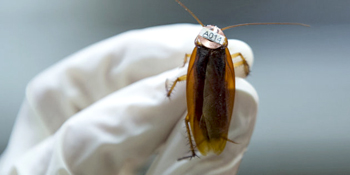Feb 6: In what can be called the most bizarre surgery, doctors in Chennai successfully removed a cockroach from a woman's skull and guess what, it was alive. According to a report published in The New Indian Express, 42-year-old Selvi felt a weird sensation around her nose and eyes at night when she asked her son-in-law to take her to the nearby clinic who then asked her to go to a government hospital where the cockroach was finally taken out.
 Selvi, a domestic worker living in Injambakkam, was fast asleep when she felt an insect crawling inside her nostril. She tried to brush it aside but it had already gone in. She then went to the clinic where the doctors told her to visit Stanley Medical College Hospital. After the nasal endoscopy, the doctors found the cockroach sitting on the skull between the woman's eyes. “This is the first such case I have seen in my three decades of practice,” Dr M N Shankar, head, ENT department at the hospital told TNIE.
Selvi, a domestic worker living in Injambakkam, was fast asleep when she felt an insect crawling inside her nostril. She tried to brush it aside but it had already gone in. She then went to the clinic where the doctors told her to visit Stanley Medical College Hospital. After the nasal endoscopy, the doctors found the cockroach sitting on the skull between the woman's eyes. “This is the first such case I have seen in my three decades of practice,” Dr M N Shankar, head, ENT department at the hospital told TNIE.
Reportedly, Selvi said the night before visiting the hospital was extremely painful. “I could not explain the feeling but I was sure it was some insect. There was a tingling, crawling sensation. Whenever it moved, it gave me a burning sensation in my eyes. I spent the entire night in discomfort, sitting up and waiting for dawn to go to Stanley hospital after getting the reference of a doctor from my employer,” she was quoted as saying.
The doctors are glad that Selvi turned up at the right time because if the cockroach would have died, it might have harmed her brain. “It was sitting in the skull base, between the two eyes, close to the brain. If left inside, it would have died before long and the patient would have developed infection which would have spread to the brain,” Dr Shankar told TNIE.





Comments
Add new comment